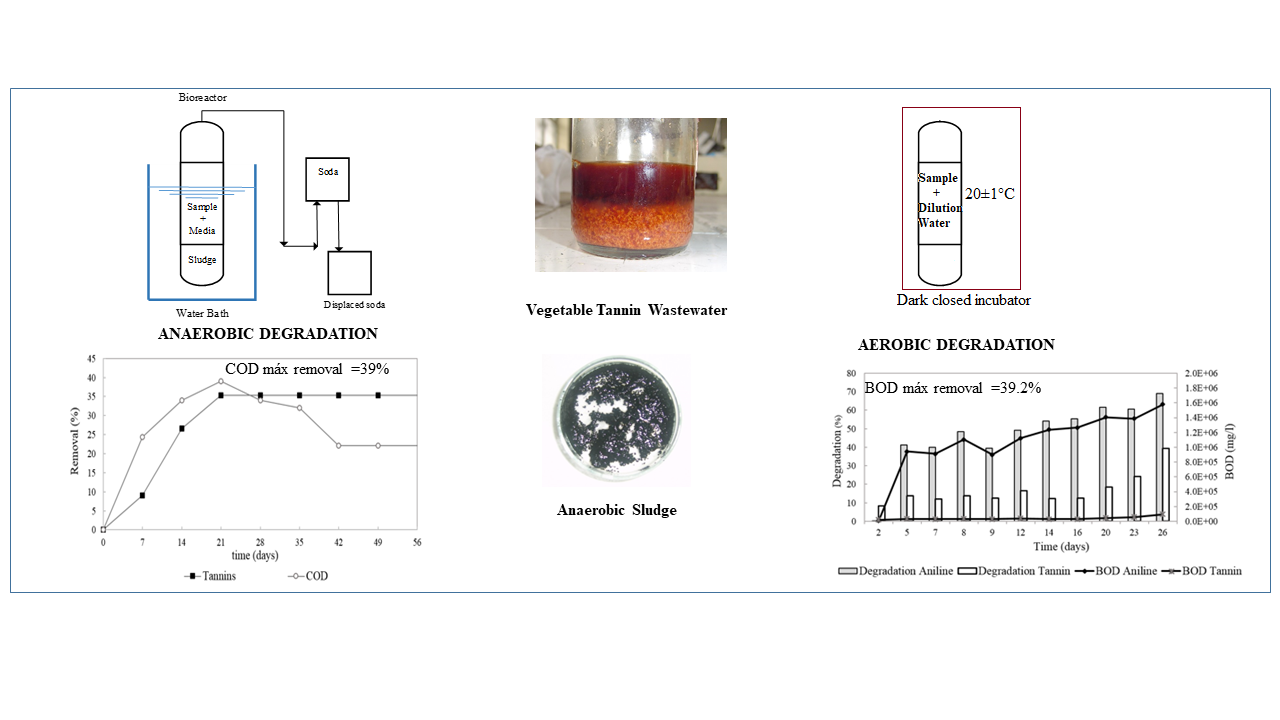
In this study, the aerobic and anaerobic biodegradability of the industrial wastewater from the vegetable tanning process were evaluated. Water from a food wastewater treatment system was used as seed inoculum for the aerobic process and mature granular methanogenic sludge from a brewery industrial wastewater plant was used for the anaerobic process. The water from the tanning industry had a biological to chemical oxygen demand ratio of 33% with values of total chemical oxygen demand (COD) in the range of 342000 mg O2/L and total dissolved solids of 506595 mg/L. The assay of the tannery effluent under aerobic conditions resulted in a decrease of COD of 39.2% and a degradation of tannins lower than 12% after 26 days, while the anaerobic degradation showed a COD reduction of 65% with a 39% of degradation of tannins. The production of methane and Volatile Fatty Acids, during the anaerobic treatment, suggests a potential adaptation of biological organisms present in the mature anaerobic granular methanogenic sludge.
Total file downloads: 6